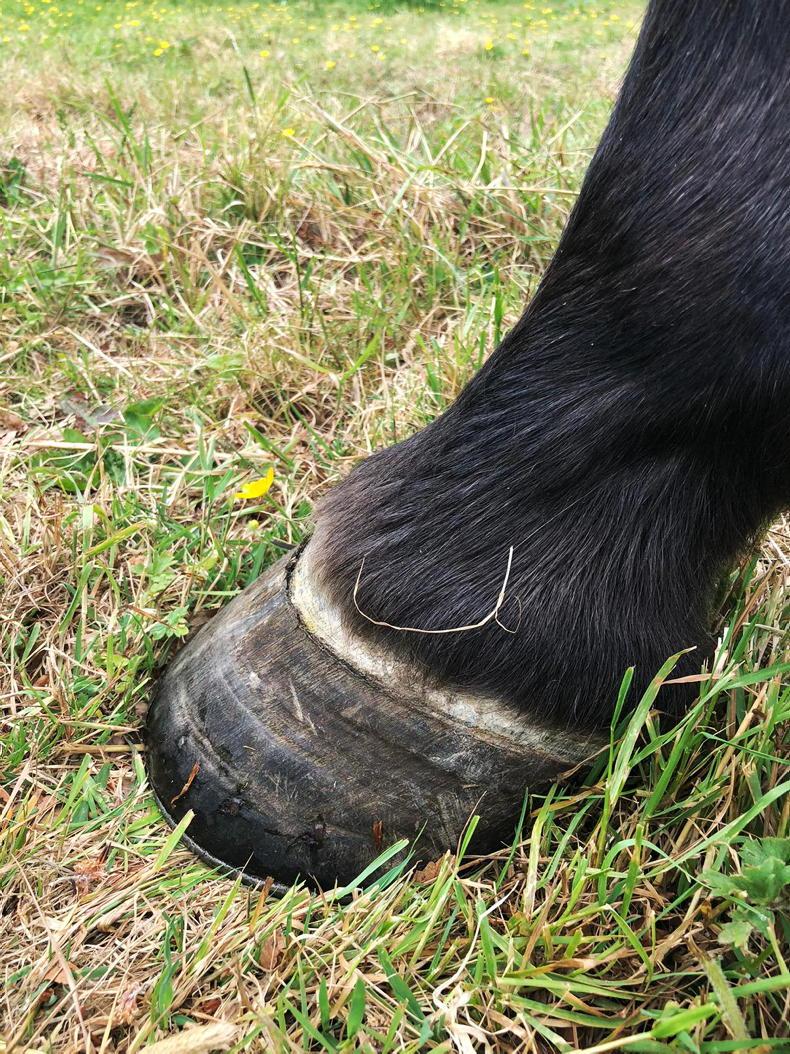SELENIUM is an essential trace mineral, meaning it is needed in animal diets in tiny quantities.
Once absorbed, it acts as an antioxidant in the body to protect the cells from damage. Selenium is also commonly combined with vitamin E in dietary supplements used to treat or prevent ‘white muscle disease’ and other muscle disorders.
However, if eaten in excessive quantities, selenium may displace sulphur from several important proteins in the body, especially those needed to form keratin. Keratin is the molecule that provides strength to hair and hooves. Under these conditions the hairs and hoof horn become weakened and brittle.
Selenium is an element with a narrow margin of safety, meaning that the difference between the necessary versus potentially toxic dietary levels are only about 10-fold. While selenium toxicity is quite rare it has been recognized for generations, with Irish agricultural writers in the 19th century referring to ‘the poisonous lands’ and the need to graze them carefully.
Isolated pockets
Ireland has only a few small and isolated pockets of soil that contain potentially toxic levels of selenium. These sites are typically located along waterways, flood plains and ancient lake beds and are concentrated in Co Meath (especially along the Slane, Boyne and Blackwater rivers), parts of Limerick, Kilkenny, north Dublin and south Tipperary.
Within affected farms the high-selenium ‘hot spots’ are often in just one field or site: typically in low-lying areas where mist or fog may be observed to linger in winter.
Animals which are left on the pasture for short periods (<30 days) rarely develop any ill effects. Nearby fields are often perfectly safe, especially if their elevation is slightly higher.
The ancient Irish practice of ‘booleying’ – moving animals to higher grazing land to make the most of the summer grass, is likely to have contributed to the avoidance of selenium toxicity and other mineral imbalances long before the ready availability of commercial dietary supplements. It’s a good example of our ancestors’ deep understanding of their land and environment.
The risk of selenium poisoning is increased if the pasture is over-grazed, causing the animals to ingest more soil along with less palatable grasses. Periods of drought may also contribute, as the lack of water causes plants to grow deeper tap roots in search of moisture.
Selenium levels are higher in deeper subsoils and plants with longer roots subsequently uptake more of the mineral. If the resulting grass is made into hay or silage, it may also contain potentially toxic levels of selenium, but poisoning in this manner is less common than in animals eating fresh grass, as the levels decline gradually with storage.
Symptoms
Horses are more prone to selenium poisoning than ruminants. Signs may appear within 30-90 days of livestock being confined to the affected pasture. The animal initially may appear stiff or dull.
The long hairs in the mane and tail become brittle, break and fall out. Lameness is common and grooves or cracks develop in the hoof walls. Affected animals sometimes develop an unusual ‘garlicky’ odour on their breath.
A diagnosis is usually made based on the characteristic signs and a history of access to affected pasture. Hair, blood and forage samples can be submitted for laboratory testing to check for excessive selenium levels.
In severe cases the entire hoof wall can split away from the coronet and be shed. This is called ‘thimbling’ and was believed to be due to the fairies attempting to steal the animal’s hooves!
Hoof wall loss will result in severe pain and affected animals may be unable to get up. Recovery may take many months and chronic pain, soft tissue infection or laminitis may result in the euthanasia of the animal on welfare grounds.
Treatment
Less severely affected animals will typically recover once taken off the pasture. Foot x-rays may be taken to check for internal damage and rule out laminitis.
Veterinary treatment for pain relief is indicated to manage the lameness, along with a tetanus booster, infection control if the soft tissues of the foot are exposed and corrective foot care from a farrier.
Specific amino acid supplements (methionine, cysteine, cystine) may also be recommended to promote the regrowth of healthy hooves.
Selenium toxicity is uncommon and usually confined to pastures with a known history which can be managed by fencing off low lying patches and limiting grazing periods to two to three weeks at a time. Over-generous administration of vitamin E and selenium supplements could also be detrimental, especially if pasture levels are already on the high side, so follow dosage guidelines to avoid issues (and wasting money).
Bear in mind that a horse’s need for supplements may vary with their diet and geographical location as well as their life stage or workload, so adjust or cease administration if they’re no longer needed.
It’s useful to follow the example of our ancestors and be as informed as possible about the history and usage of the land and pastures that sustain our animals: ní haon ualach an t-eolas (knowledge is no burden).
